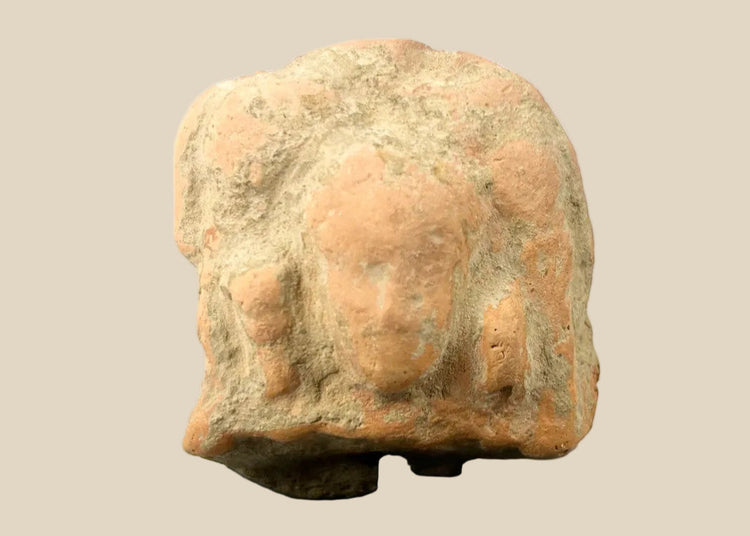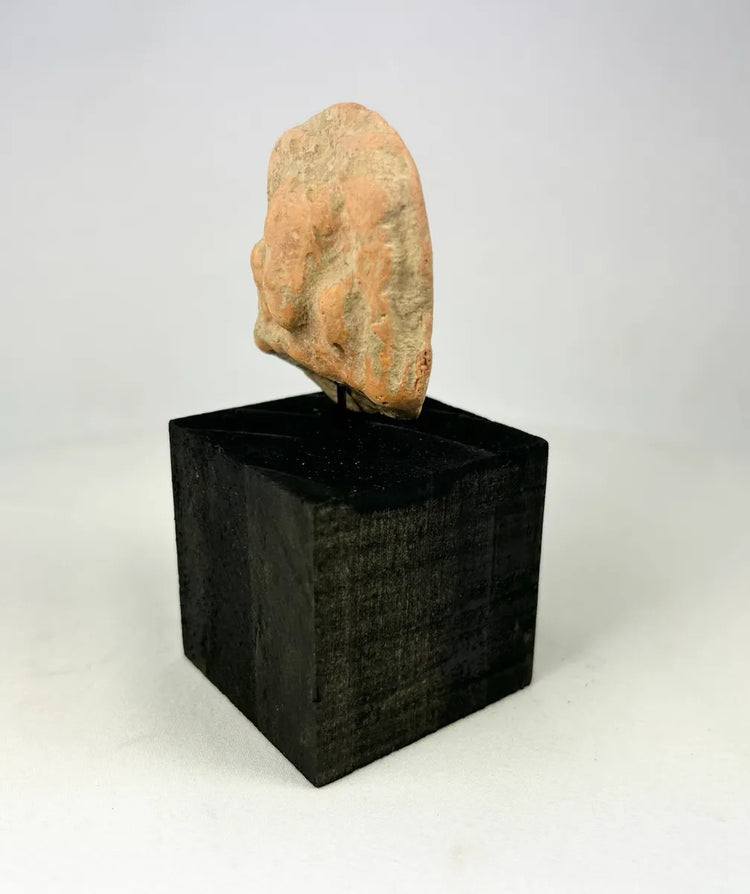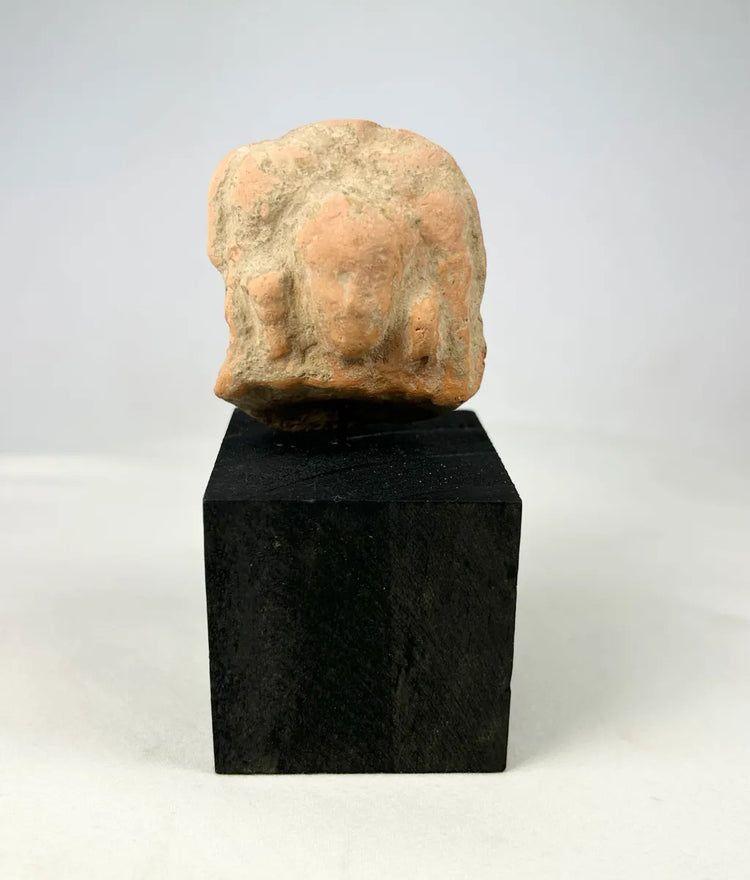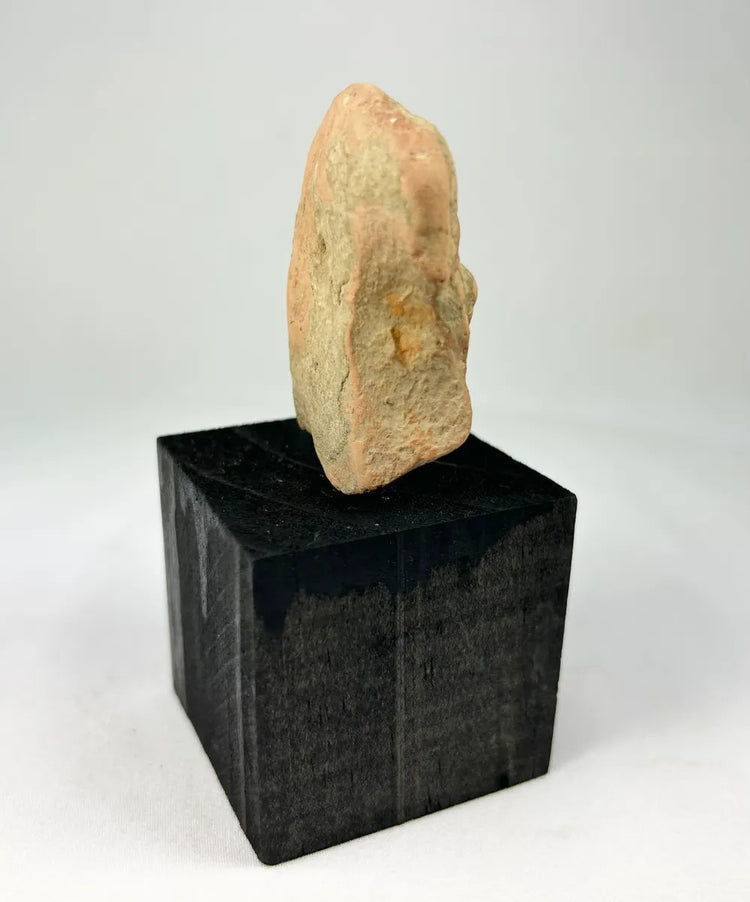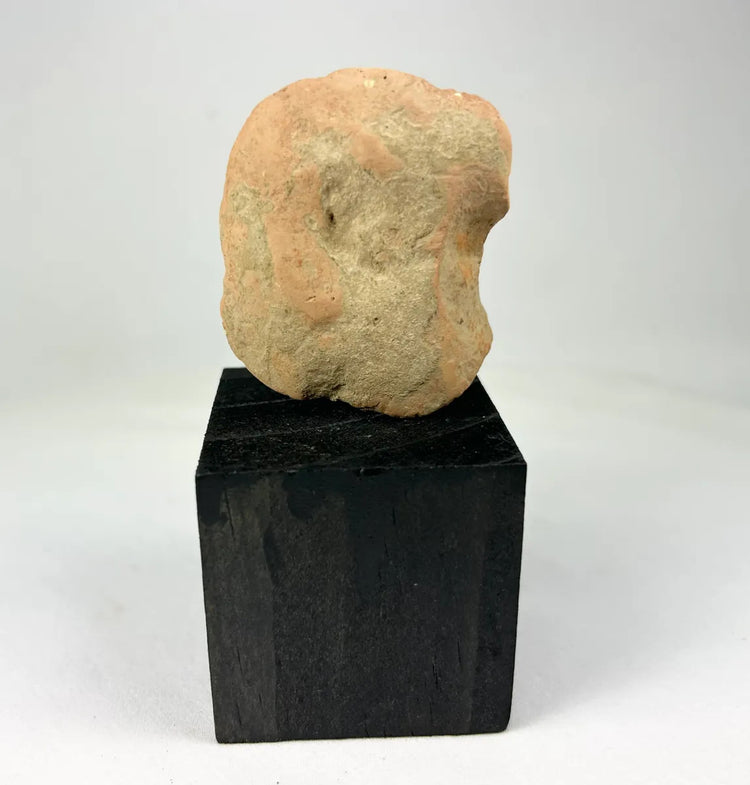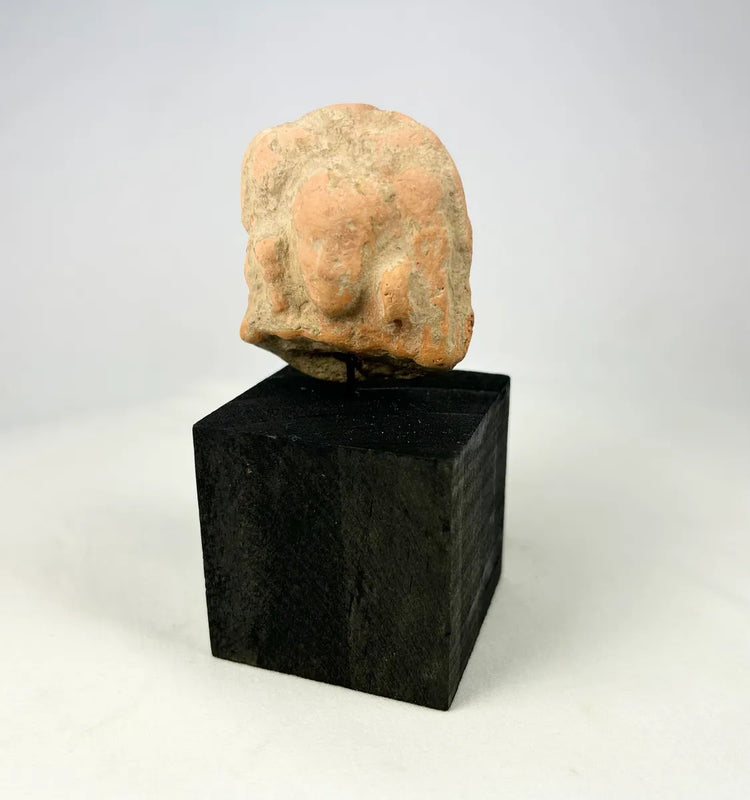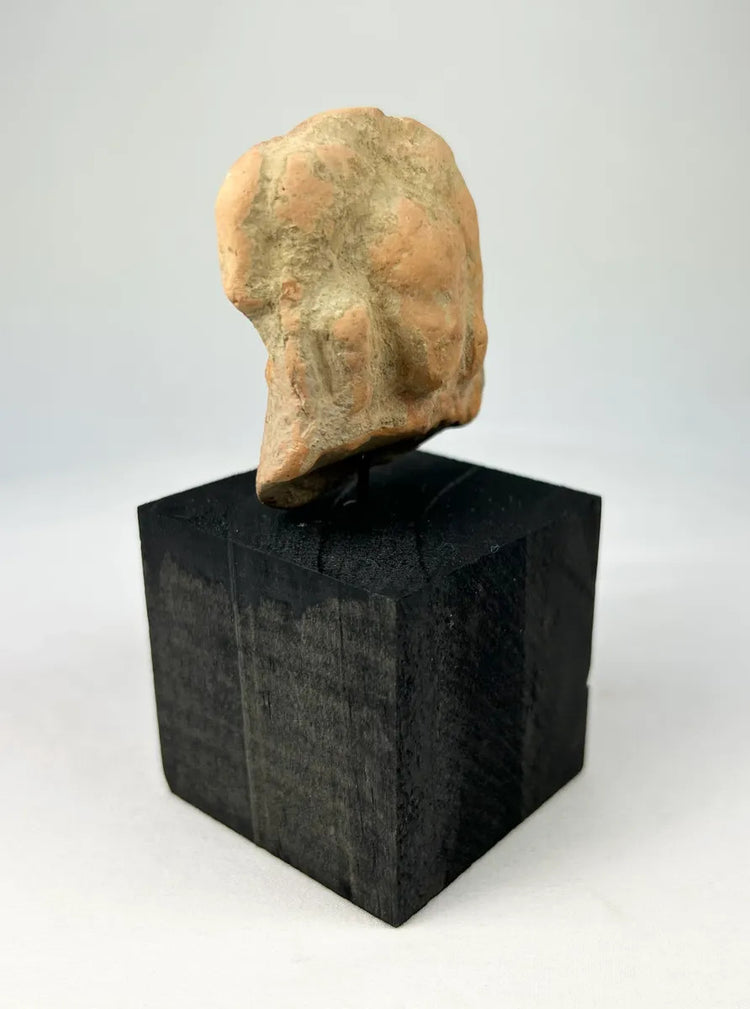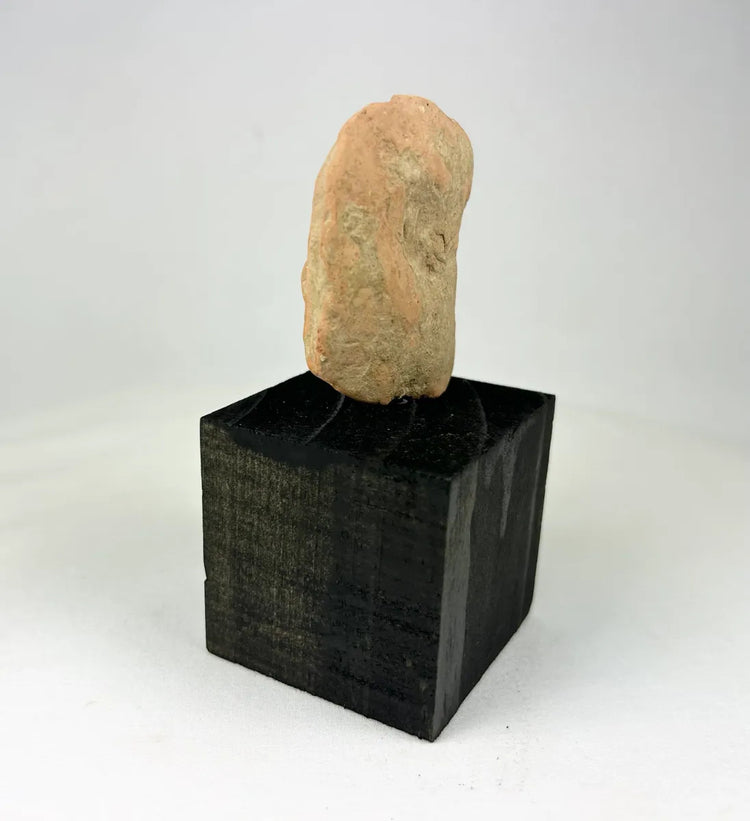Ancient Terracotta Fragment with Male Bust | Gandharan/Northwest India | Circa 2nd–4th Century CE
Description
More
Less
Historical Context & Origin
Region: Gandhara / Northwest India (Kushan Period influence)
Material: Terracotta
Period: Circa 2nd–4th Century CE
Description
A fragmentary terracotta plaque featuring a central male bust flanked by faint side figures. The face, though worn, retains discernible features with almond-shaped eyes and a rounded hairstyle or headdress typical of Gandharan and Kushan terracotta votive figures. Such fragments once adorned temple walls, shrines, or household altars, reflecting devotional practices in Buddhist and Hindu contexts of the region.
Features
- Central male head with faint side attendants in relief
- Warm reddish-brown terracotta with natural encrustation
- Mounted on a custom display base for presentation
- Surface wear consistent with great antiquity
Cultural Significance
Terracotta reliefs of Gandhara and adjacent regions reveal the blend of Greco-Roman naturalism and South Asian spiritual themes. They were used as votive objects, architectural decorations, or small shrines, linking daily worshippers with divine and heroic imagery.
Condition
Fragmentary, with significant surface erosion and encrustation obscuring finer details. Stable with clear form and historical character intact.
Dimensions (approximate)
Height (with base): 4.25 in
Width: 2 in
Age
Estimated 2nd–4th century CE
Description
Historical Context & Origin
Region: Gandhara / Northwest India (Kushan Period influence)
Material: Terracotta
Period: Circa 2nd–4th Century CE
Description
A fragmentary terracotta plaque featuring a central male bust flanked by faint side figures. The face, though worn, retains discernible features with almond-shaped eyes and a rounded hairstyle or headdress typical of Gandharan and Kushan terracotta votive figures. Such fragments once adorned temple walls, shrines, or household altars, reflecting devotional practices in Buddhist and Hindu contexts of the region.
Features
- Central male head with faint side attendants in relief
- Warm reddish-brown terracotta with natural encrustation
- Mounted on a custom display base for presentation
- Surface wear consistent with great antiquity
Cultural Significance
Terracotta reliefs of Gandhara and adjacent regions reveal the blend of Greco-Roman naturalism and South Asian spiritual themes. They were used as votive objects, architectural decorations, or small shrines, linking daily worshippers with divine and heroic imagery.
Condition
Fragmentary, with significant surface erosion and encrustation obscuring finer details. Stable with clear form and historical character intact.
Dimensions (approximate)
Height (with base): 4.25 in
Width: 2 in
Age
Estimated 2nd–4th century CE
You May Also Like






















